Transform your outdoor space into a relaxing retreat or entertaining hub with a budget-friendly DIY patio makeover. Whether you’re aiming to refresh an outdated area, enhance functionality, or simply elevate your curb appeal, a patio renovation can offer a stunning transformation without breaking the bank. With a range of affordable materials and creative techniques, you can achieve a sleek, modern look or customize your space to match your home’s style. From resurfacing options to modern design ideas, this guide explores cost-effective solutions for every aspect of your patio upgrade, helping you create a beautiful and functional outdoor oasis right at home.
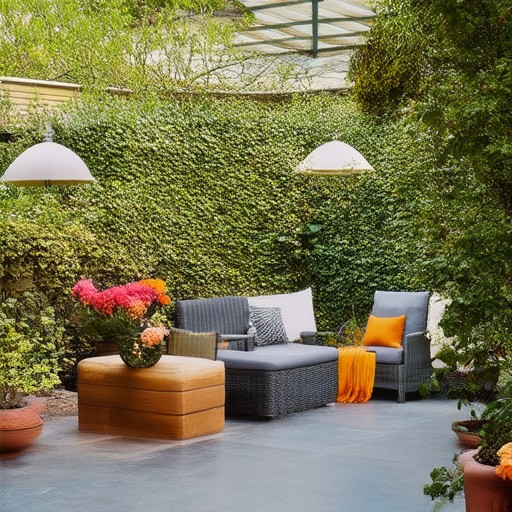
What is the Cheapest Way to Redo a Patio?
Redoing a patio can be a cost-effective project if planned carefully. Here’s a breakdown of the cheapest methods and considerations:
1. Material Selection
- Gravel: Known for its affordability, gravel is a great choice for a budget-friendly patio. However, it may lack stability and could become uneven over time.
- Concrete Pavers: More durable than gravel, concrete pavers can offer a smoother surface and are often more stable. They may cost slightly more initially but could save money in the long run due to lower maintenance needs.
- Composite Decking: While pricier than gravel or concrete, composite decking is low-maintenance and has a longer lifespan, making it a cost-effective option for those looking for durability.
2. Prep Work
- Remove Old Patio Materials: If the current patio is in poor condition, removing it yourself or hiring a professional can save money. Use tools like a shovel or rental equipment for larger projects.
- Check Base Layer: Ensure the base layer is level and sturdy. If it isn’t, you may need to add sand or compact the soil, which can be done with a plate compactor.
3. Design Considerations
- Simplicity is Key: Opt for basic shapes like squares or rectangles to minimize costs. Complex designs can increase labor and material expenses.
- Color and Finish: Use a base coat of stain or sealer to enhance the appearance without the cost of full painting. Add decorative elements like plants or lighting if desired.
4. Installation Method
- DIY Installation: If you’re experienced, installing gravel or concrete pavers yourself can save money. Rent tools like a bobcat for heavier lifting if needed.
- Hiring Professionals: For complex projects or if you lack experience, consider hiring a landscaping company. Look for local deals or discounts during off-season times.
5. Maintenance Tips
- Weather-Resistant Materials: Invest in materials that can withstand harsh weather conditions to reduce long-term maintenance costs.
- Regular Cleaning: Keep your patio clean to prevent stains and prolong its lifespan. Use mild detergents and water for simple cleaning solutions.
- Sealing: Apply a sealant annually to protect against fading and wear. This can save money by reducing the need for frequent repairs.
6. Permits and Zoning
- Check Local Regulations: Before starting your project, verify if you need a permit for patio renovations in your area. Some cities may require it, especially if you’re building a new structure or altering the property.
- Zoning Laws: Ensure your patio design complies with local zoning laws to avoid any legal issues later.
By following these tips, you can create a beautiful and functional patio while keeping costs under control. Start by evaluating the current condition of your patio, choose the right materials, and plan your design before diving into any major renovations.
The Cheapest Way to Surface a Patio
Creating a patio can be a cost-effective project if you choose the right materials and methods. Here are some of the most economical options:
- Concrete : Concrete is often the cheapest material for surfacing a patio. It’s durable, low-maintenance, and easy to install. You can opt for plain concrete or enhance it with stamps, colors, or patterns to improve its appearance.
- Stamped Concrete : If you want a more decorative finish, stamped concrete can mimic the look of natural materials like wood or stone. While it may cost slightly more than plain concrete, it offers a more polished appearance.
- Pavers : Pavers are another popular choice, though they tend to be more expensive than concrete. However, there are more affordable paver options available today, such as thin pavers or budget-friendly tiles that still offer a stylish finish.
- Deco Cement : Decorative concrete overlays like Deco Cement can add visual interest to your patio. These products are relatively affordable and come in a variety of textures and colors, making them a great option for those who want a unique look without spending too much.
- Natural Stone Slabs : For a more natural and rustic aesthetic, consider using natural stone slabs. While they may be heavier and more expensive upfront, they can add significant value to your home and last for many years.
Tools and Tips for Success
- Power Trowel : Using a power trowel can save time and effort compared to laying concrete by hand. It’s a worthwhile investment if you plan to do this yourself.
- D.I.Y. Kits : Look for affordable patio kits that include everything you need to complete the project. These kits are perfect for small areas and can save you money compared to hiring professionals.
- Seasonal Sales : Keep an eye out for seasonal sales or discounts on patio materials. Many retailers offer special deals during certain times of the year, so timing your purchase wisely can help you save.
- Local Retailers : Don’t overlook local hardware stores or landscaping companies. They may offer better pricing or have access to bulk materials that aren’t available elsewhere.
By considering these options and planning carefully, you can create a beautiful patio surface without breaking the bank. Always compare prices, check for deals, and make sure the material you choose fits your lifestyle and budget.
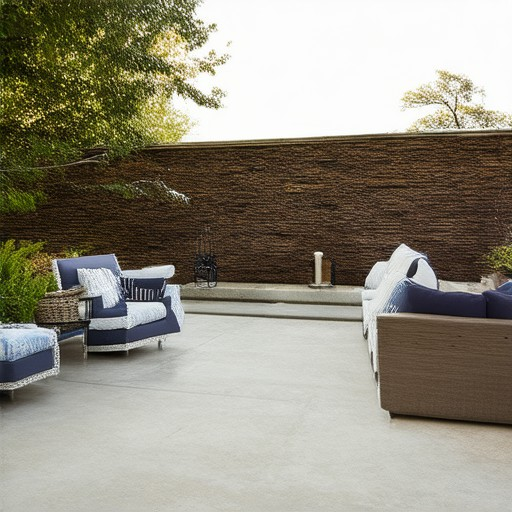
How to Modernize an Old Patio
To modernize an old patio, focus on updating its design, functionality, and aesthetic appeal. Here’s a step-by-step guide:
- Assess the Current Condition : Evaluate the patio’s condition, looking for areas that need repair or updating. Check for uneven surfaces, cracking, or fading materials.
- Resurface or Replace Materials :
- Concrete : Consider resurfacing with a colored overlay or stamping for a sleek, updated look.
- Pavers : Replace old concrete with durable, stylish pavers available in various colors and patterns.
- Decking : Update wood decking with composite or treated wood for better durability and weather resistance.
- Rethink the Layout :
- Shape : Opt for curved or circular layouts instead of traditional rectangles for a contemporary vibe.
- Levels : Incorporate tiered seating or elevated platforms to add visual interest and functionality.
- Built-In Features : Add built-in seating, storage boxes, or a small firepit for added utility and ambiance.
- Upgrade Lighting :
- Install modern string lights or solar-powered lanterns for soft illumination.
- Add motion-activated lights for safety and convenience.
- Introduce Green Elements :
- Use drought-tolerant plants like succulents, grasses, or perennials for low maintenance.
- Incorporate vertical gardens or wall-mounted planters to maximize space and add life to the space.
- Modernize Furniture :
- Replace old or worn-out furniture with sleek, lightweight options like metal or resin-based pieces.
- Choose styles that reflect current design trends, such as minimalist or mid-century modern aesthetics.
- Add Functional Accessories :
- Include an outdoor kitchen or pizza oven for entertaining.
- Install shade structures like umbrellas, awnings, or pergolas to create comfortable sitting areas.
- Enhance Color and Texture :
- Introduce bold statement pieces like mosaic tiles or large-scale planters.
- Select a cohesive color palette that complements your home’s exterior and personal style.
- Consider Maintenance :
- Use low-maintenance materials and schedule regular cleaning or power washing to keep the patio looking fresh.
- Blend with Surrounding Landscape :
- Ensure the patio flows seamlessly with your garden or deck. Add softscaping elements like gravel paths or retaining walls to enhance the overall look.
By focusing on these key areas, you can transform an old patio into a modern, functional, and aesthetically pleasing outdoor space that enhances your lifestyle.
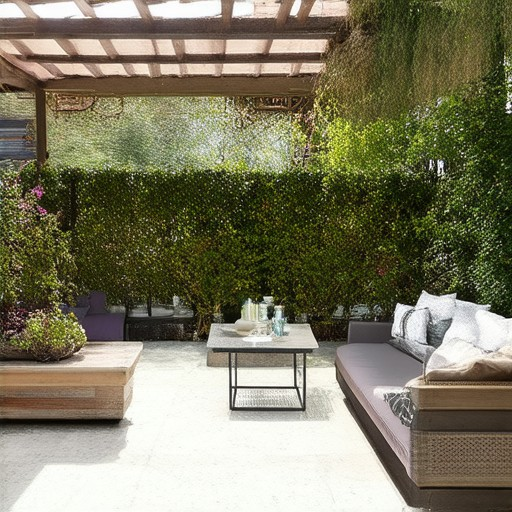
The Cheapest Way to Upgrade a Concrete Patio
If you’re looking to refresh your outdoor space without breaking the bank, consider these budget-friendly upgrades:
- Paint or Stain the Concrete
A fresh coat of paint or stain can completely transform the look of your patio. This method is relatively inexpensive and doesn’t require removing the existing surface. Clean the concrete thoroughly, apply a primer, and choose a color that complements your home’s exterior. This option is ideal for those seeking a quick and easy update. - Add an Outdoor Area Rug
Covering your concrete patio with an outdoor rug can hide imperfections and add a pop of color or pattern. While it doesn’t cover the entire surface, it creates a cozy atmosphere and is a cost-effective way to refresh your space. Just ensure the rug is made from durable material suitable for outdoor use. - Apply Decorative Stencils
Use stencils to add decorative patterns or designs to your concrete patio. This method allows you to customize the look without replacing the entire surface. Choose from geometric shapes, floral motifs, or abstract designs to match your style. You’ll need to apply paint or a sealant afterward for protection. - Install Interlocking Deck Tiles
For a more substantial upgrade, interlocking deck tiles can cover the entire patio area. These tiles snap together and are available in various colors and styles. While they may be slightly more expensive than painting, they offer a durable and low-maintenance surface. Consider the size of your patio when purchasing tiles. - Use Vinyl Peel-and-Stick Tiles
Another affordable option is vinyl peel-and-stick tiles, which can be applied to your concrete surface. These tiles are easy to install and come in a variety of patterns and colors. They provide a quick transformation and are less messy than painting. Keep in mind that they may become slippery if not properly secured. - Add Planters Made from Recycled Materials
Enhance your patio with planters made from repurposed materials like wood pallets. These planters can be used to line the edges of your patio, adding both functionality and aesthetic appeal. You can grow herbs, flowers, or small plants, turning your patio into a green space. - Seal the Concrete Surface
Protect your patio and enhance its appearance by applying a high-quality concrete sealer. This step can prevent stains and extend the life of your upgraded surface. Sealing is particularly useful if you plan to use rugs or tiles, as it provides a smooth and even surface.
For the most cost-effective solution, consider combining several of these methods. For example, paint the concrete, add stencils for extra detail, and finish with a sealant for added protection. This approach balances affordability with a polished look. Always ensure the surface is clean and dry before applying any treatments, and check local weather conditions to avoid moisture issues.
How Much Does a 20×20 Concrete Patio Cost?
A 20-foot by 20-foot concrete patio typically costs between $2,000 and $6,000, inclusive of labor and materials. However, several factors influence the final price:
- Labor Costs: Labor varies by region, with prices ranging from $8 to $12 per square foot for installation.
- Material Costs: Concrete slab pricing is approximately $3 to $5 per square foot, depending on additives and thickness.
- Delivery Fees: Delivery charges can add $100 to $300, depending on distance and supplier.
- Finishing Touches:
- Plain Slab: $3,500 – $5,500 (basic finish)
- Stamped Concrete: $4,500 – $9,000 (includes decorative stamps and colors)
- Acid Etched Concrete: $6,000 – $11,000 (for a weathered look)
- Pavers and Tiles: If opting for pavers or tiles, expect to spend $8,000 to $15,000 for materials and installation.
- Installation: Installation labor is usually $1,000 to $3,000, depending on complexity and size.
- Permits and Inspection Fees: Plan for additional $200 to $600 for permits and inspections.
Key Considerations: Obtain multiple quotes, check local building codes, and consider seasonal discounts. For professional advice, consult Peck and Gartner’s DIY Concrete Patio Guide .
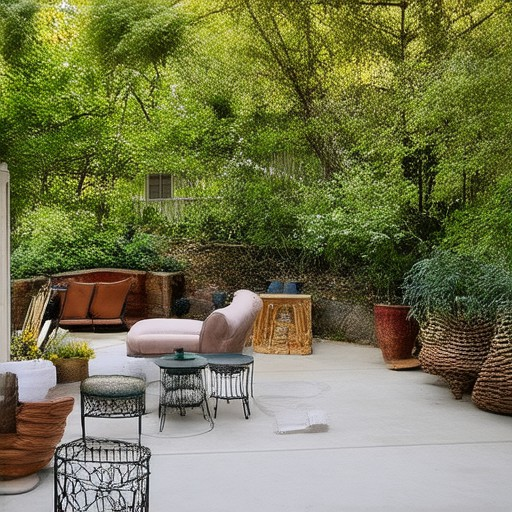
How to Make Your Old Concrete Patio Look Better
To enhance your old concrete patio, follow these organized steps:
- Step 1: Clean Thoroughly
- Gather supplies: pressure washer, concrete cleaner, mild detergent.
- Apply concrete cleaner according to instructions; avoid harsh chemicals for a natural approach, using vinegar and water if preferred.
- Scrub thoroughly to remove dirt, grime, and stains. Rinse well and allow to dry completely.
- Step 2: Brighten with Staining or Painting
- Choose between acid-based or water-based stains to cover imperfections. Consult store experts for the best product suited for your needs.
- For a fresh look, apply concrete paint in a solid color. Consider durability and foot traffic when selecting.
- Step 3: Add a Decorative Border
- Enhance definition with a decorative border using pavers, tiles, or colored concrete. This adds visual interest and defines the patio’s edge.
- Consider cost and effort; tile borders may require more labor, while colored concrete can offer a seamless look.
- Step 4: Resurface or Overlay Concrete
- If damage is severe, consider resurfacing with a thin layer of concrete overlay. Check for DIY kits or professional services depending on your skill level and tools availability.
- Step 5: Incorporate Decorative Elements
- Add visual appeal with stamped concrete or exposed aggregate techniques. Research local contractors experienced in these methods for a polished finish.
- Step 6: Enhance Landscaping
- Install flowers or shrubs along edges for softening and integration with surrounding landscape. Consider potted plants for added vibrancy.
- Step 7: Maintain Regularly
- Apply concrete sealer every 2-3 years to protect against fading and wear. Frequency depends on local climate conditions.
- Step 8: Improve Lighting
- Install ambient lighting like string lights or solar-powered path lights for evening ambiance and safety.
- Step 9: Optimize Furniture Placement
- Arrange outdoor furniture to highlight patio features, such as scenic views or design elements, to maximize aesthetic appeal.
By following these steps, you can transform your old concrete patio into a more attractive and functional space, enhancing both functionality and curb appeal.

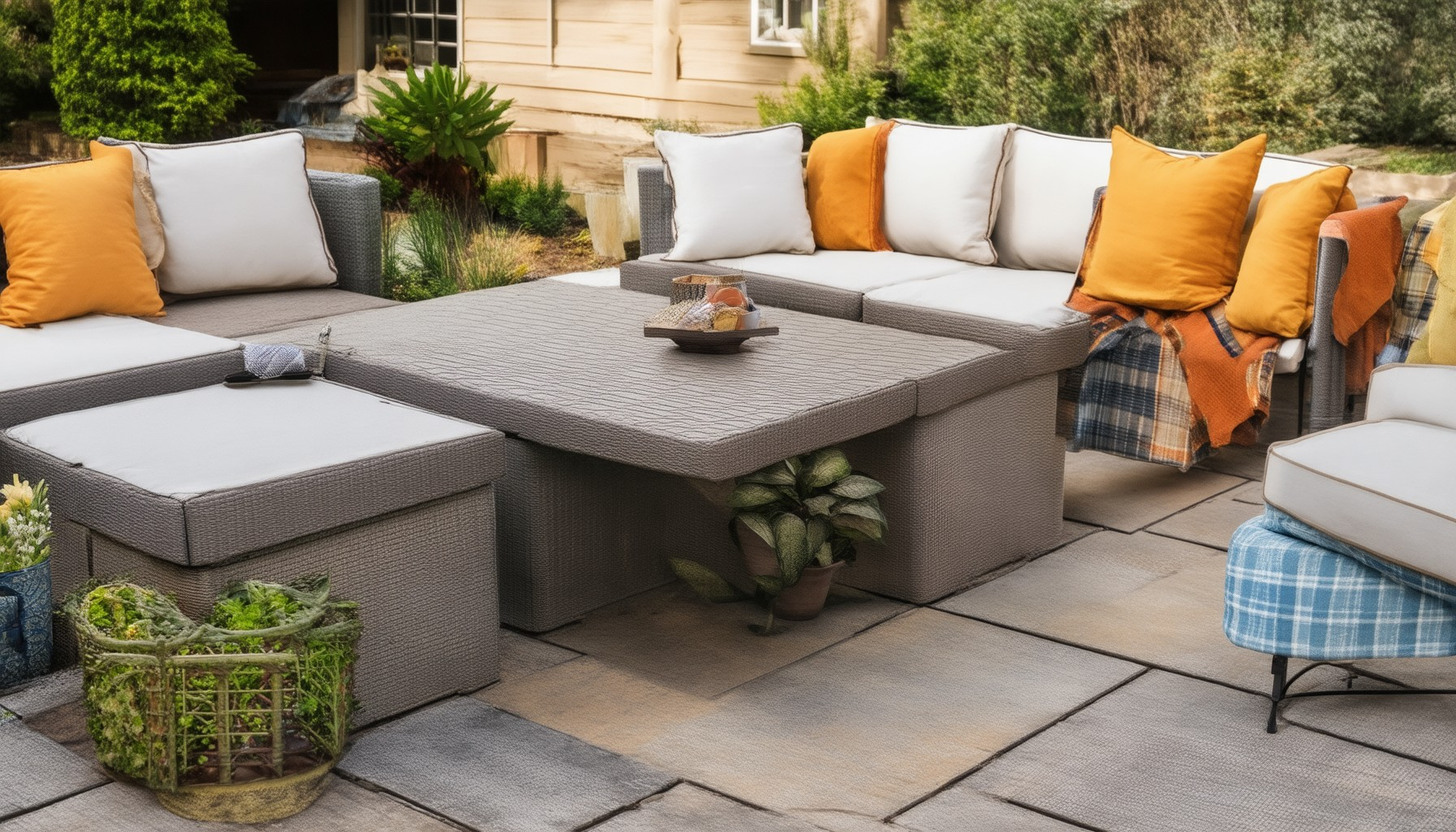



0 Comments